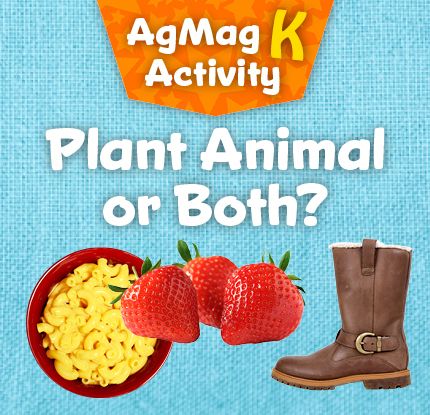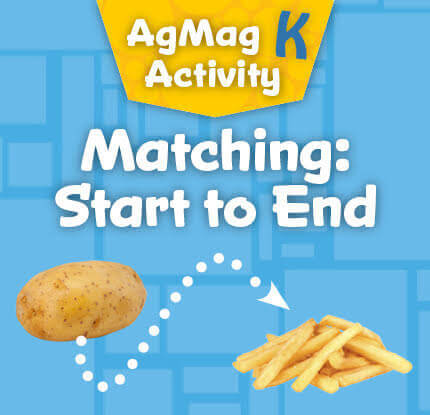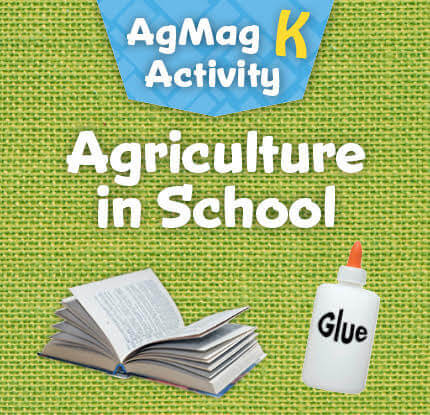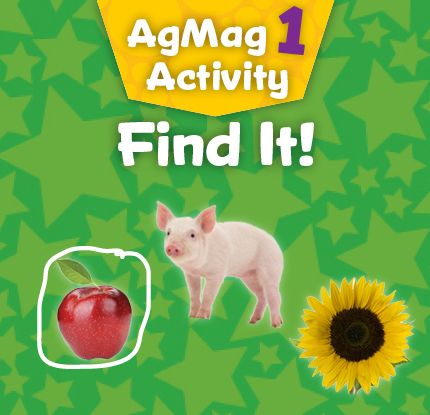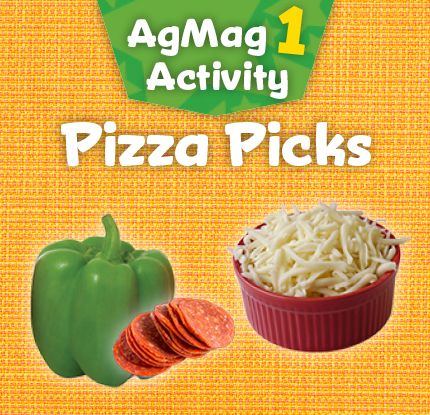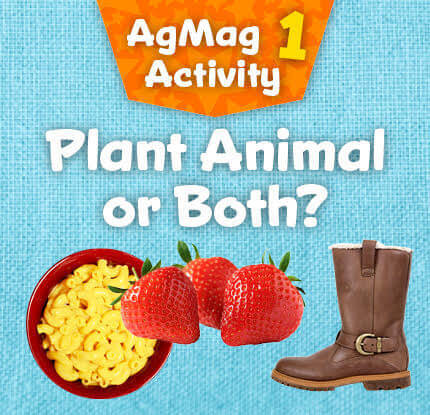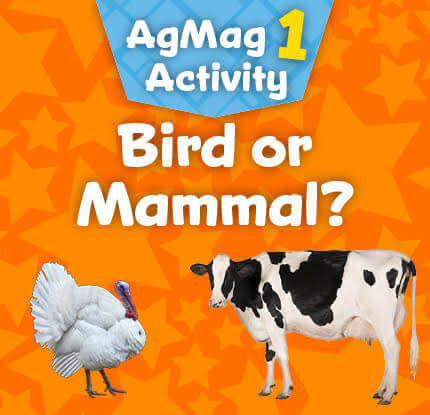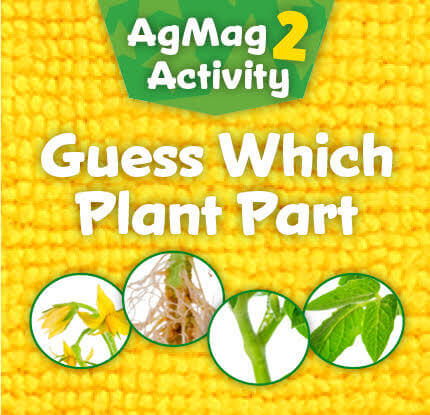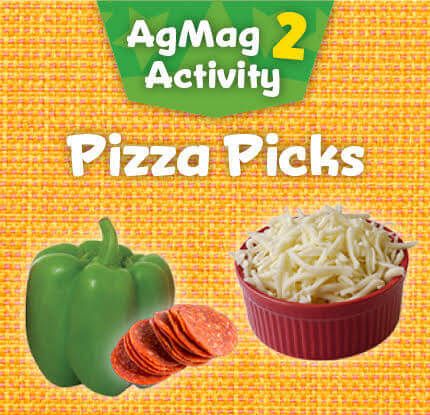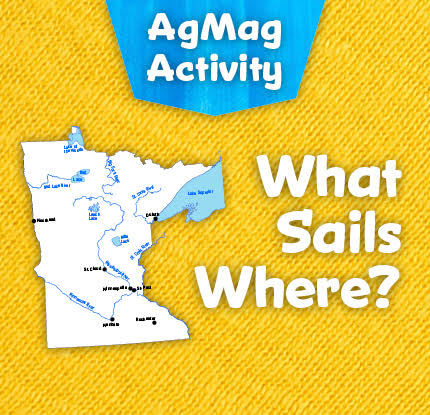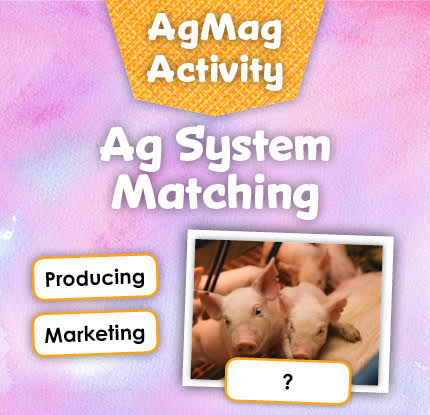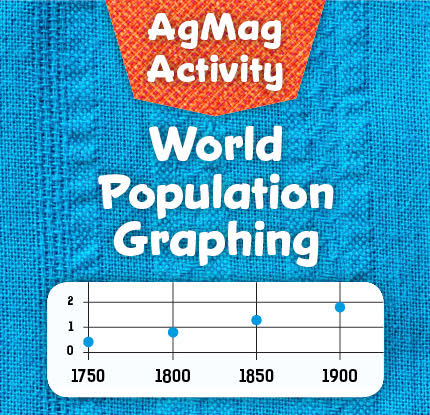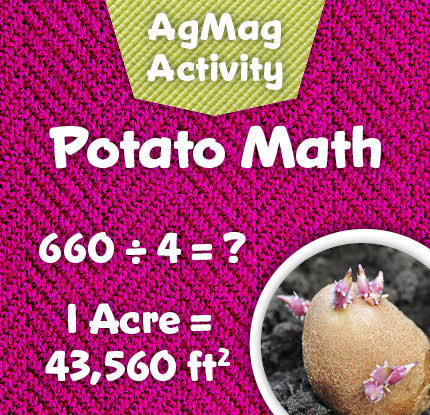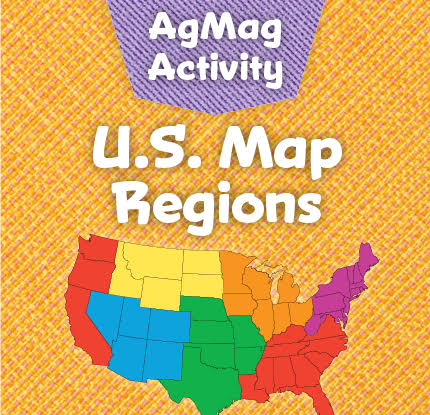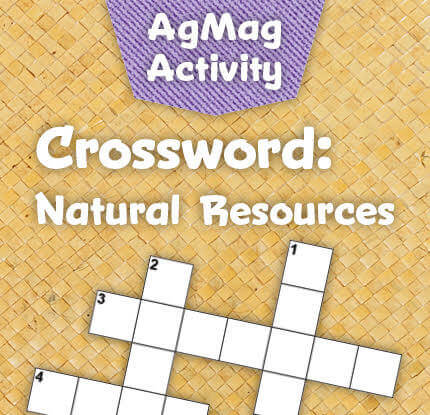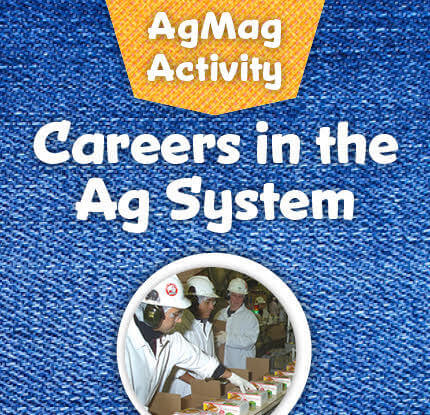AgMag Teacher Guide Issue 3
Why Ag in the Classroom?
Agriculture means survival. Over time, fewer and fewer people have close contact with farming and the total agricultural sector. They’re not aware of their own and society’s total dependence on agriculture. People must be agriculturally literate in order to make responsible decisions affecting this giant lifeline.
Teaching students to be agriculturally literate brings their learning to life. Helping students understand the farm-to-delivery connection is important in our consumer-driven society. That’s what the student Minnesota AgMag Series is all about.
Integration Ideas
Social Studies
- Research the role that water and other natural resources have played throughout the history of Minnesota. Ideas include formation of cities, transportation, moving goods, power source for manufacturing, etc.
- Use the information on pages 7 to discuss the reasons that bring Hmong, East African, Hispanic, Asian, Indian, and other immigrants and refugees to Minnesota. Compare and contrast their experiences with earlier immigrant groups in the nineteenth century.
Science and Health
- Use the agricultural examples in the AgMag to focus on environmental science and natural resources.
- Use the information on pollinators (pages 4-5) to identify opportunities to increase habitat and encourage pollinators on your school grounds or in your community.
- Assist students in discovering the pollinators that allow plants to produce their favorite fruits and vegetables.
- Research the nutritional value of these foods and their location on the MyPlate diagram.
- Use the science and technology connections to agriculture on pages 7 to discuss the impact of STEM on food production and the agricultural industry.
Glossary
Some words in your AgMag may be unfamiliar to your students. These words often appear in bold type or in italics. Many are defined in the articles. Words you may wish to pre-teach are:
ANTHER: The part of the plant that produces pollen
APIARIES: A collection of beehives
AQUATIC: Of or relating to water, such as plants or animals that live in water
AQUIFERS: An underground layer of water-bearing permeable rock or materials such as gravel, sand, or silt from which groundwater can be extracted
BUFFER STRIPS: A strip of land with grass or natural vegetation along waterways, lakes, and rivers
EVAPORATION: Process in which a liquid transforms into a gas
GROUNDWATER: Groundwater is the water found underground in aquifers
HYDROLOGIC CYCLE: The cycle in which water is passed through several states involving evaporation, precipitation, and transpiration
IMMIGRANTS: A person who moves from one country to settle in another
IRRIGATION: The process of watering land via manmade mechanisms
NATURAL RESOURCES: Materials from the earth that humans use to consume or to make manmade products
PRECIPITATION: Rain, snow, sleet, or hail that falls from the sky to the ground
PHOTOSYNTHESIS: The process used by plants to convert energy from the sun into chemical energy that supports the plants
POLLINATION/POLLINATOR: Pollination occurs when pollinators (animals or insects) carry pollen from one plant to another, allowing for the reproduction of that plant
PRECISION FARMING: A method of farming that observes, measures, and responds to inter- and intrafield variability in crops for maximum productivity
STRIP CROPPING: A method of farming that alternates types of crops through a field in narrow strips, often to prevent soil erosion
TRANSPIRATION: The process where moisture travels through a plant, with much of it eventually evaporating
STIGMA: The part of a plant that receives pollen and begins the pollination process
SURFACE WATER: Water on the surface of the Earth, such as lakes, ponds, and streams
Minnesota K-12 Academic Standards
Minnesota Academic Standards Connection
|
Subject |
Standard Code |
Benchmark |
|
Social Studies |
4.3.4.9.1 |
Explain how humans adapt to and/or modify the physical environment and how they are in turn affected by these adaptations and modifications. |
|
Social Studies |
6.3.3.6.1 |
Locate, identify, and describe major physical features in Minnesota; explain why physical features and the location of resources affect settlement and the growth of cities in Minnesota. |
|
Social Studies |
6.3.4.10.1 |
Describe how land was used during different time periods in Minnesota history; explain how and why land use has changed over time. |
|
Social Studies |
6.4.4.23.2 |
Identify the major Minnesota political figures, ideas and industries that have shaped or continue to shape Minnesota and the United States today. |
|
Science |
5.4.2.1.1 |
Describe a natural system in Minnesota, such as a wetland, prairie, or garden, in terms of the relationships among its living and nonliving parts as well as inputs and outputs. |
|
Science |
5.4.4.1.1 |
Give examples of beneficial and harmful human interaction with natural systems. |
AgMag Cover (Social Studies, Science, Environmental Studies)
- Just what are Minnesota’s natural resources? Brainstorm a list; think about all the wonderful things that occupy our air, land, and water. Why is it necessary to protect these treasures?
- What natural resources can you find in these pictures? (Water, air, plants)
- Why do we say farmers are some of our most important environmentalists? (They manage such a large amount of land—nearly three-quarters of the land in Minnesota—so the ways they care for and protect resources are very important.)
Student Pages 2 and 3 (Social Studies, Science, Economics)
- How many ways do you use water each day? How much water do you use? (Showering, 5 gal/min; toilet flushing, 6 gal; brushing teeth, 2 gal; hand washing, 2 gal; automatic dishwasher, 15 gal/load; washing machine, 20-30 gal/load.) How could you save water in your daily activities?
- Farmers do much more than just the listed activities to protect water and the environment. What are some other things they do? (Leave some land undisturbed to protect native plants and create wildlife habitat; plant trees as windbreaks to reduce soil erosion; use computer-based precision farming to manage planting, fertilizing, irrigation and crop protection applications, etc.)
- What are some things you can do to keep the air clean? (Ride bikes or walk to places rather than ride in a car, or have several people ride in one vehicle together, like a school bus; use less electricity when possible, as generating electricity can cause air pollution; plant trees!)
Cool Water Facts Answer
250 gallons of water equals one ton.
Why Do Farmers Do These Things? Answers
(Accept other logical answers too)
- Keeps toxic materials and pollution out of water a, d, e, f and g
- Helps reduce loss of soil to wind or water erosion b, f and g
- Conserves water b, c
- Helps keep animal waste out of rivers, wetlands and lakes d, e, f and g
Student Pages 4 and 5 (Science, Environmental Education)
- Bees are getting a lot of attention in the media lately because they are so critically important to the worldwide food supply. Bees have amazing social colonies, fascinating communication, and so much more. You’ll find many good Internet resources for learning all about the captivating world of bees, including www.buzzaboutbees.net, which has lots of facts and activities, including downloadable pictures for coloring.
- Where are the beehives in your community? (Depending on your location, this could include: backyards, farms, restaurants, businesses, schools, parks)
Crossword Answers:
Down
1. Stigma
2. Natural resources
6. Beehive
Across
3. Apiary
4. Nectar
5. Anther
7. Pollen
Trivia Answer:
C. 55,000 miles
Student Page 6 (Science, Social Studies, Health)
- Why is eating well so important? (Our bodies thrive on good food and do not benefit from non-nutritious choices. Good nutrition helps our bodies stay strong and well. The body you have now is the only one you will ever have. Do your best to keep it healthy!)
- What are some ways you can eat more healthfully?
- Is your school using locally grown food in its food service program? Use the U.S. Department of Agriculture (USDA) Farm to School Census Data to find out. You can search by state and school district at: http://www.fns.usda.gov/farmtoschool/census#/map
Menu Choices Answers:
Beverage Choice: Milk and Water
Main Dish: Turkey Wrap with Raw Veggies
Dessert: Apple
Student Page 7 (Science, History, Social Studies)
- How can the scientific and technological advances in agriculture benefit farmers? Consumers? (Farmers can be more efficient with their time. Some technology tools and advancements in crop production allow for lower levels of pesticides and herbicides to be used. Farmers are able to use science and research in seed and plant development to increase their yields (amount of the crop produced). The living conditions for livestock animals (temperature, light, space, etc.) can be optimized so the animals produce more milk, eggs, wool, etc. Consumers have a greater quantity and variety of food products to select from.)
- Today Minnesota welcomes immigrants and refugees from Asia, Africa, Europe, Mexico, and many other countries. Regardless of where their journey began, these newcomers bring foods and traditions that enrich us all. What foods have you eaten that came to us from other countries? Think Mexico, China, Japan, Vietnam and other Southeast Asian countries, Somalia, and Europe. What foods did your ancestors bring from their homelands?
- Why is it important for young people to be involved in agriculture and farming? (Agriculture is the giant lifeline that feeds, clothes, and shelters the world. Each generation depends on farmers to provide these things, all needed for survival.)
- Imagine you want to be a farmer. What would you need to learn in order to run a farm? To grow crops? To raise livestock? Who could teach you these things? How would you get money to buy or rent land and equipment? (Many young people get their start in farming because they grow up in farm families, learning from parents and grandparents. They may take over family farms when older generations retire. High school and college courses help, too. The University of Minnesota and many other schools have programs for people who want to study agriculture or become farmers. See the University of Minnesota’s College of Food, Agricultural and Natural Sciences [CFANS] at www.cfans.umn.edu. For a list of schools all around Minnesota offering courses in agriculture, natural resources and related fields, see www.schoolchoices.org/colleges/in/minnesota/field/1.)
Student Page 8
Match the River to the Number on the Map
- Minnesota: 7
- Red: 1
- St. Croix: 5
- Mississippi: 3
- Root: 8
- St. Louis: 4
- Rainy: 2
- Rum: 6
For 7 Generations
What do you think this meant?
Potential answers: Think how what you do will affect people many years from now; take care of the earth; think long-term
How would thinking like this make a difference in what we do to the environment today?
Potential answers: Discussion of caring for our natural resources
Are You Water Wise? [reproducible]
Across:
2. Rain
5. Glaciers
8. Aquifers
9. Groundwater
Down:
1. Fertilizer
3. Surface water
4. Gas
6. Pollution
7. Agriculture
Minnesota’s water borders include the Red, Rainy, Mississippi, St. Louis, Bois de Sioux, Pigeon and St. Croix Rivers, and Lake Superior. Our borders with Canada also include boundary waters.



